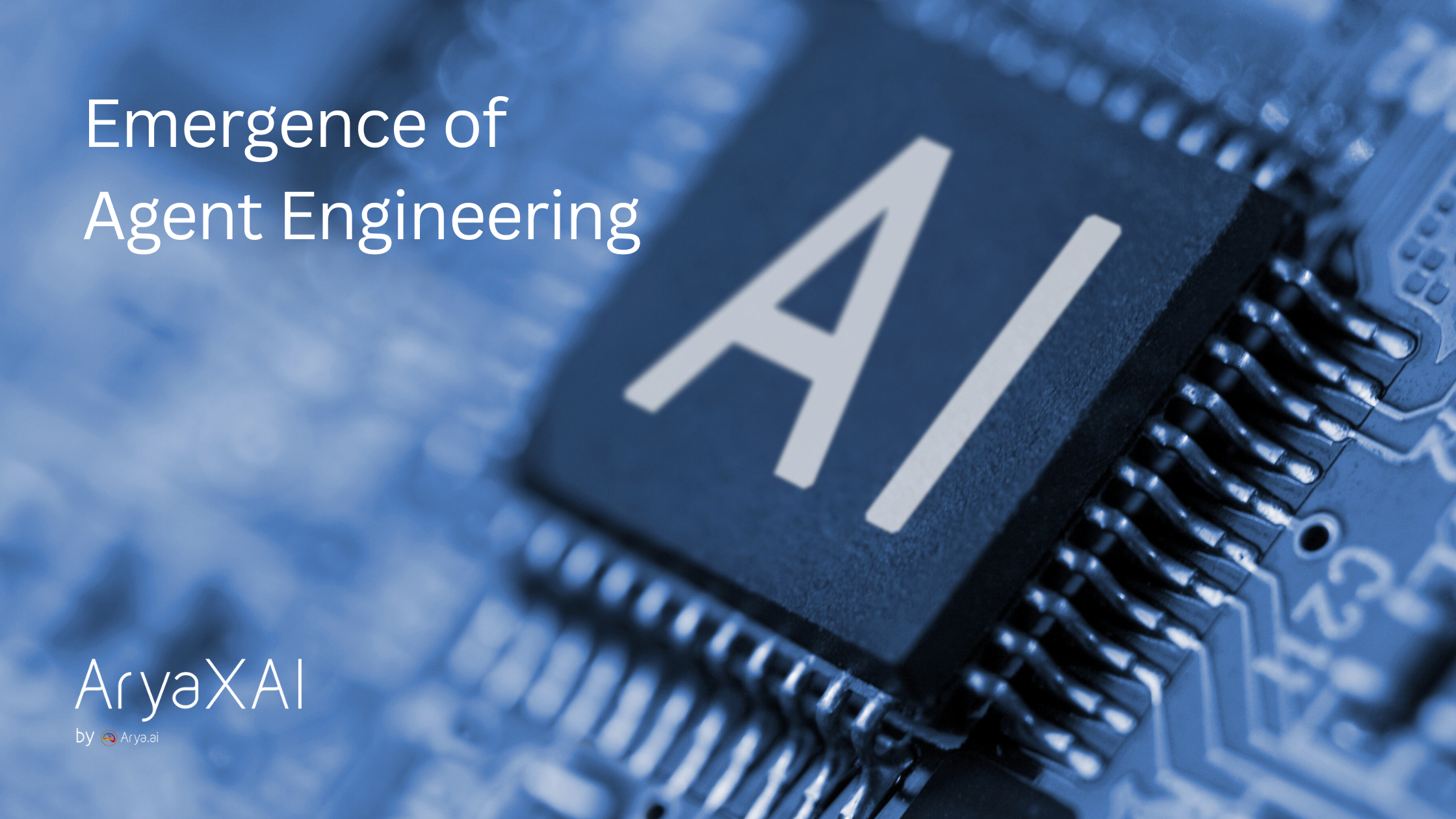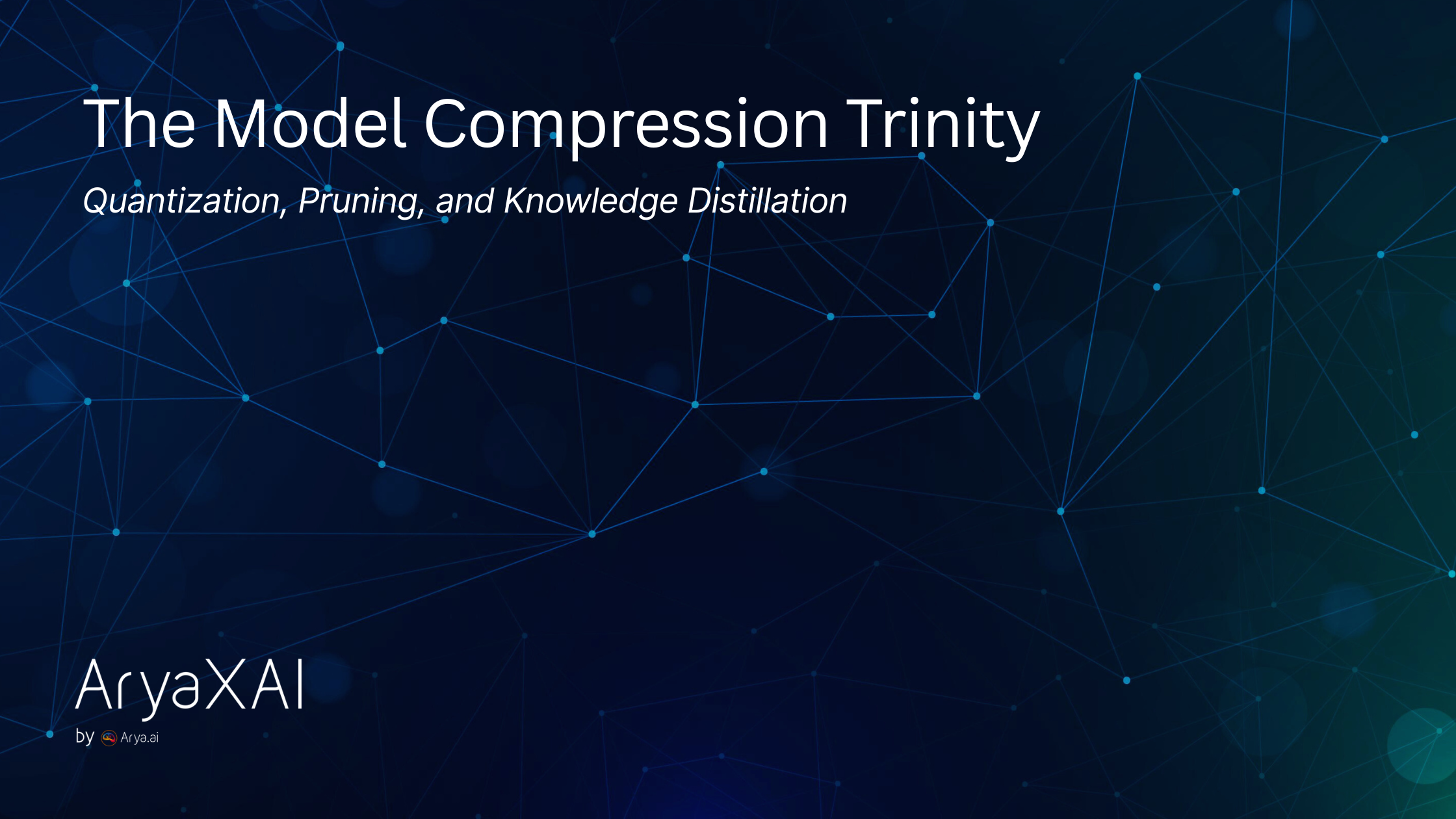Latest AI Research Papers: July 2025 Roundup - Part 2
10 minutes
July 28, 2025

Key Takeaway (TL;DR): The era of brute-force compute is over, replaced by a strategic focus on co-designing the entire AI inference stack. A detailed analysis of fourteen seminal papers shows that breakthroughs in cloud-native scaling, heterogeneous hardware orchestration, and radical on-device LLM architecture are enabling unprecedented AI efficiency. This body of work provides a clear roadmap for AI developers and AI governance leaders to build trustworthy AI models that are not only powerful but also practical, cost-effective, and secure for all AI deployments.
This is Part 2 of our July 2025 AI research roundup — don’t miss Part 1 here.
Research Papers Analyzed in This Article:
- SuperSONIC: Cloud-Native Infrastructure for ML Inferencing [https://arxiv.org/html/2506.20657]
- Efficient and Scalable Agentic AI with Heterogeneous Systems [https://arxiv.org/html/2507.19635v1]
- SageServe: Cloud Autoscaling for Diverse Workloads [https://arxiv.org/html/2502.14617v1]
- SmallThinker: A Family of Efficient Large Language Models Natively Trained for Local Deployment [https://arxiv.org/html/2507.20984]
- SpeedLLM: An FPGA Co-design of Large Language Model Inference Accelerator [https://arxiv.org/html/2507.14139v1]
- LoopServe: An Adaptive Dual-phase LLM Inference Acceleration System for Multi-Turn Dialogues [https://arxiv.org/html/2507.13681]
- Dynamic Memory Sparsification: Hyper-Scaling with KV Cache Compression [https://arxiv.org/html/2506.05345v1]
- Efficient LLM Inference: Bandwidth, Compute, Synchronization, and Capacity are all you need [https://arxiv.org/html/2507.14397v1]
- The BAR Conjecture: the Feasibility of Inference Budget-Constrained LLM Services with Authenticity and Reasoning [https://arxiv.org/html/2507.23170v2]
Introduction: From Brute Force to Engineered Efficiency
The past few months have been a whirlwind for those of us watching the AI inferencing space. By July 2025, it seemed that a new paper emerged every week promising faster responses, lower latency, more secure AI model hosting, or the holy grail - running massive Large Language Models (LLMs) locally. This intensive pace of AI innovation has forced a paradigm shift. The core findings from the latest AI research papers reveal that the path to a high-performance AI inference stack is not about brute-force overprovisioning but about the intelligent, deliberate co-design of software and hardware.
This analysis synthesizes the core findings from fourteen groundbreaking papers that collectively define the new era of AI engineering. We will dissect the work that, in our view, will shape how we think about AI inference in the coming year, providing crucial insights for AI developers, AI governance leaders, and AI risk management professionals aiming to build responsible AI systems.
Part I: The Infrastructure Layer - Serving Diverse AI Workloads at Scale
This cluster of research focuses on building cloud-native and heterogeneous infrastructure that can adapt to the diverse demands of modern AI applications, from scientific workloads to complex multi-stage AI agents.
Research Paper 01: SuperSONIC: Cloud-Native Infrastructure for ML Inferencing
- Analysis: This paper addresses the unique challenges of serving high-energy physics and gravitational-wave experiments, where workloads are highly variable and unpredictable. The SuperSONIC team's solution is a Kubernetes-based, Triton-powered stack that decouples experiment-specific code from the core serving infrastructure. This architecture dynamically scales GPUs up or down according to load, provisioning resources only when a new batch of data hits the queue.
- Conclusion: A solid, cloud-native architecture with clever scheduling is a clear win for flexible AI inference, dramatically improving GPU utilization and throughput compared to statically allocated systems.
- This research demonstrates a pragmatic approach to AI infrastructure that prioritizes flexibility and AI efficiency. The core lesson is that for unpredictable, bursty workloads (common in scientific and enterprise settings), dynamic scaling is not a luxury but a necessity for reducing computational costs and maximizing the return on expensive AI hardware. This connects directly to the need for AI governance to consider AI efficiency as a key factor in resource allocation.
Research Paper 02: Efficient and Scalable Agentic AI with Heterogeneous Systems
- Analysis: As AI assistants evolve from simple chatbots to orchestrating multi-stage tasks (e.g., calling a planner, querying a database, running a search), the workload resembles a pipeline. This paper argues that serving these agentic workloads efficiently requires dynamic orchestration across CPUs, GPUs, and specialized AI accelerators. They propose a planning framework that uses a cost model to decide which hardware is most appropriate for each task in the pipeline, mixing older GPUs with new accelerators to match the total cost of ownership of deploying everything on state-of-the-art GPUs.
- Conclusion: Efficient and scalable AI requires intelligent orchestration across heterogeneous hardware. This approach can match the total cost of ownership of deploying on expensive, single-purpose hardware.
- This paper highlights a critical trend in AI engineering. The heterogeneous future of AI isn't just about exotic chips but about the intelligent software that orchestrates them. This insight is crucial for AI developers and MLOps teams building complex AI systems that rely on multiple AI algorithms and external tools, informing strategic decisions on AI infrastructure investment.
Research Paper 03: SageServe: Cloud Autoscaling for Diverse Workloads
- Analysis: This paper addresses a core problem in cloud AI deployments: over-provisioning. It observes that cloud platforms often over-provision GPU resources to meet worst-case latency requirements, leaving expensive accelerators idle. The authors model interactive, non-interactive, and opportunistic workloads and then use integer-linear programming to decide when to spin up or down GPU virtual machines and how to route requests.
- Conclusion: SageServe demonstrates that treating AI inference as an optimization problem can reduce GPU hours by 25% and scaling overheads by 80% while still meeting service-level objectives.
- This research provides a powerful business case for smarter AI governance and MLOps. It proves that clever scheduling and optimization can lead to massive savings, a critical lesson for any organization looking to scale its AI deployments in a cost-effective manner. The findings directly inform AI development and AI deployments strategies by showing that a more intelligent approach to resource allocation can significantly improve AI efficiency and reduce the Impact of AI on a company's bottom line.
Part II: The On-Device & Architectural Frontier - Rethinking LLMs for Local Inference
This research focuses on new architectures and co-design approaches that are challenging the "cloud-only" paradigm of LLMs, enabling powerful AI models to run on resource-constrained devices.
Research Paper 04: SmallThinker: Designing LLMs for the Edge
- Analysis: Instead of taking a giant cloud AI model and compressing it, the team behind SmallThinker - flipped the narrative by designing a model from scratch for cheap consumer CPUs and slow SSDs. The result is a two-level sparse architecture that mixes Mixture of Experts (MoEs) layers with sparse feed-forward networks. A pre-attention router predicts which "expert" parameters will be needed and prefetches them from disk, hiding storage latency. Combined with a NoPE-RoPE hybrid sparse attention mechanism to cut KV cache memory, the system delivers over 20 tokens/s on ordinary consumer CPUs.
- Conclusion: The authors show that on-device LLM inference doesn’t have to be a gimmick. It is possible to design powerful AI models from the ground up for resource-constrained edge devices, delivering strong model performance even on slow storage.
- This paper is a game-changer for AI accessibility and data privacy AI. It provides a blueprint for AI engineering that prioritizes the AI deployment environment from the start, a critical shift from the cloud-centric approach. The research directly enables a new class of AI applications that can run locally, reducing data privacy AI risks and enhancing AI efficiency by eliminating network latency and computational costs of cloud APIs.
Research Paper 05: SpeedLLM: An FPGA Co-design of Large Language Model Inference Accelerator
- Analysis: While GPUs dominate the AI inference landscape, this paper showcases a resurgence of interest in FPGAs (Field-Programmable Gate Arrays) for edge deployment. SpeedLLM shows that by using a custom data pipeline, a memory-reuse strategy, and a fusion of Llama2 operators, it can dramatically reduce redundant memory reads and writes.
- Conclusion: Compared with software running on a traditional framework, SpeedLLM delivers up to 4.8x faster AI inference and 1.18x lower energy consumption on FPGA hardware.
- This research highlights the importance of co-designing software and hardware for specialized AI applications (e.g., satellite communication, IoT gateways) where energy efficiency and latency are non-negotiable. This finding is critical for AI development in a future of increasingly diverse AI hardware and highlights a new frontier for optimizing AI efficiency.
Part III: The Memory & Cache Optimization Revolution
This research directly addresses the core bottlenecks of Transformer-based LLMs by reinventing how they manage memory and attention over long sequences, unlocking new levels of throughput and AI efficiency.
Research Paper 06: LoopServe: Taming Multi-turn Dialogues
- Analysis: This paper tackles the notorious challenge of multi-turn conversations, where the context window and KV cache grow, leading to a massive increase in memory usage and latency. LoopServe proposes a dual-phase acceleration framework: during the prefill phase, it sparsifies the attention matrix on the fly by selecting only the most important tokens; during the decode phase, it progressively compresses the KV cache based on the relevance of recently generated tokens.
- Conclusion: LoopServe outperforms context compression and static KV caching baselines, delivering smoother, faster responses for AI chatbots even when the conversation runs for tens of thousands of tokens.
- This research is a direct solution to a major problem in conversational AI. It provides a powerful example of AI engineering focused on optimizing the AI inference loop itself. This innovation enables a new class of AI applications with much longer, more coherent conversation histories, significantly improving model performance for generative AI systems and enhancing the user experience.
Research Paper 07: Dynamic Memory Sparsification: Hyper-Scaling with KV Cache Compression
- Analysis: One way to improve reasoning quality is to let the AI model think longer or explore multiple reasoning paths. However, this means storing more key/value pairs in the KV cache, which quickly saturates memory. This paper introduces Dynamic Memory Sparsification (DMS), which compresses the KV cache on the fly by merging similar representations.
- Conclusion: DMS achieves 8x compression after just 1,000 training steps while preserving or even improving reasoning accuracy. It demonstrates that careful cache management can unlock more reasoning per unit of hardware.
- This is a key breakthrough in AI efficiency and a crucial tool for AI fine-tuning. It shows that AI models can be optimized for both model performance and AI inference cost simultaneously. For AI developers and researchers, it offers a new way to hyper-scale LLMs under a fixed compute budget, directly impacting the cost of ownership and the accessibility of complex AI models.
Part IV: The Theoretical & Foundational Limits
This research provides a low-level look at the underlying AI hardware constraints and the theoretical limits of AI services, guiding the strategic design of future AI systems.
Research Paper 08: Hardware Limits Under the Microscope
- Analysis: With all the hype around "inference tokens per second," it's easy to forget the low-level engineering that makes those tokens appear. This paper conducts a limit study of GPU architectures. It shows that balanced systems, where memory bandwidth, compute capacity, synchronization overhead, and model size are tuned in concert - can achieve 1000-2500 tokens/s on today’s hardware, but hitting 10,000 tokens/s would require fundamentally new AI algorithms.
- Conclusion: AI inference performance is bounded by the slowest subsystem. The path to the next level of AI efficiency requires the co-design of software and hardware.
- This paper is a sobering reminder for AI engineering that chasing single metrics (e.g., raw compute) is a flawed strategy. It’s a call to arms for holistic system design and a key insight for AI governance that regulatory or performance standards must consider the physical limits of AI hardware.
Research Paper 09: The BAR Conjecture: The Feasibility of Inference Budget-Constrained LLM Services with Authenticity and Reasoning
- Analysis: This theoretical paper introduces the BAR Conjecture, which formalizes the intuition that when deploying LLM applications, product teams often juggle three competing goals: run fast (Budget), be accurate (Authenticity), and show deep reasoning (Reasoning). The authors prove that no LLM service can simultaneously optimize all three. For example, improving factual grounding often requires retrieval and multiple AI inference passes, which slows response time; pushing the AI model to reason more deeply tends to increase hallucinations or computational costs.
- Conclusion: The BAR Conjecture proves a fundamental AI trade-off: you can achieve a high score on two of the three goals, but optimizing for all three is theoretically impossible with current architectures.
- This paper is a powerful design compass for AI development. It provides a clear framework for AI decision making, forcing leaders to consciously choose the most critical trade-offs for their specific AI application, whether that's prioritizing speed over deep reasoning or authenticity over speed. This is a crucial concept for AI governance and AI risk management, as it mandates a clear understanding of an AI model's inherent limitations from the outset.
Synthesis and Strategic Takeaways for Business and Technology Leaders
This focused body of research offers clear, actionable intelligence for anyone investing in or building with AI:
- The Age of Engineered Efficiency: The era of simply deploying a massive LLM and hoping for the best is over. The competitive edge in AI deployments now comes from implementing advanced techniques like MoEs and CRFT and leveraging co-designed hardware to achieve superior model performance and AI efficiency at a fraction of the cost.
- The Pragmatic Path to Trust: The journey toward trustworthy AI models requires us to confront the deep-seated flaws in naive reasoning. By grounding AI agent reasoning in external tools, transparently revealing its internal mechanisms, and building sophisticated defenses against multi-modal threats, we can move from the illusion of reasoning to a reality of engineered, verifiable intelligence.
- A New Framework for AI Governance: The BAR Conjecture proves that a single AI model cannot be all things to all people. This necessitates a more sophisticated AI governance framework that understands and documents these inherent trade-offs, ensuring that the AI model's design aligns with its intended purpose and its inherent AI risks are proactively managed. AI auditing must adapt to this new reality, scrutinizing not just an AI model's final output but also the underlying infrastructure and design trade-offs that dictate its behavior.
Conclusion
The common thread across these papers is not a single universal algorithm but co-design: architects are blending model innovations, scheduling strategies, hardware specialization, and theoretical limits to push the AI inferencing stack forward. Whether you’re building chatbots, running scientific experiments, deploying recommendation engines, or squeezing a language model into an IoT device, the path to success is not about finding a magical model, but about committing to rigorous engineering and continuous improvement.
Inference isn’t just the last mile of AI - it’s a rich research area where clever ideas can save millions of dollars, slash energy use, and make powerful AI models accessible to everyone, fundamentally reshaping the future of responsible AI. To learn how the principles of Grounded AI Reasoning can be applied to build a reliable and verifiable AI strategy for your enterprise, explore AryaXAI - A Enterprise-Grade AI Engineering Platform.
SHARE THIS
Discover More Articles
Explore a curated collection of in-depth articles covering the latest advancements, insights, and trends in AI, MLOps, governance, and more. Stay informed with expert analyses, thought leadership, and actionable knowledge to drive innovation in your field.

Is Explainability critical for your AI solutions?
Schedule a demo with our team to understand how AryaXAI can make your mission-critical 'AI' acceptable and aligned with all your stakeholders.
























